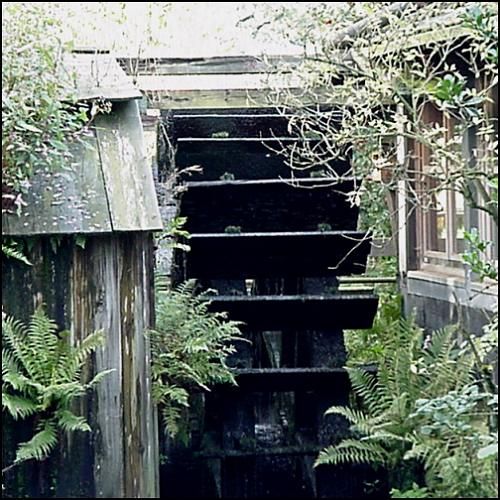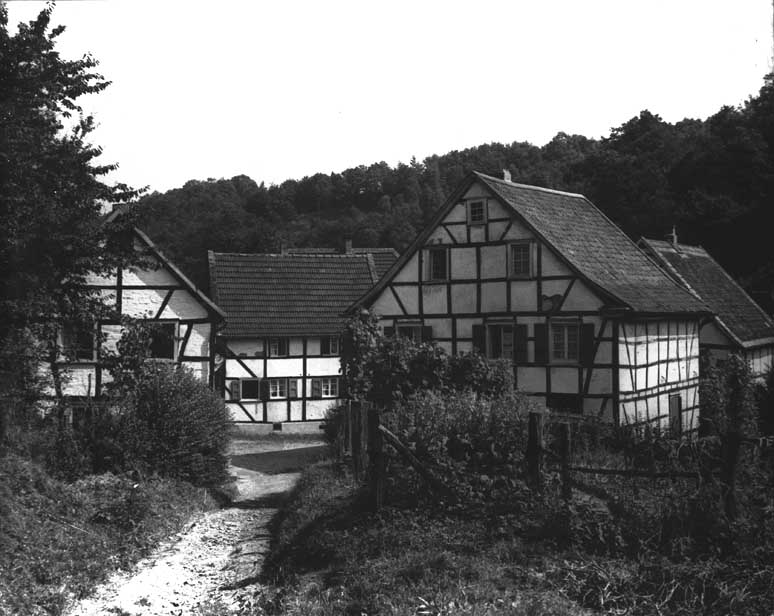Hofschaft and Kotten
(Terms, understandable not for everyone)
Since we find ourselves in the internet, our
presentations can be read by everyone all over the world, though the terms
"Hofschaft" or "Kotten" are barely known everywhere in Germany, because they are
specific to our lokal area. So I decided to try an explanation here:
(if someone knows more about it, please send me
information)
Kotten đ
With a litle bit of fantasy you can find a word-relationship to "Kate"
from Northern-Germany and to the english "cottage". Well, in sense of building
a Kotten is everything else but a hut. Much stronger timbered as habitations
because it had to stand the power of sledge-hammers and big grinding stones,
but built in a humble way, only as a working-place.
Very early Solingen was specialised in crafting steel, particularly in manufacturing
cuttlery. So it was adjacent to use the power of that numerous strong flowing
water courses in this area, and build the first Kotten near brooks or the river Wupper.
Water-wheels drove the first sledge-hammers and grinding stones until long time after
the steam-engine was invented. Some of them are runing still.
One of two big water-wheels at Wipperkotten on Wupper

Because of the special
topographic position of Solingen those Kotten where standing far from what could
be named town in this time. Maybe this fact has brought out the "invention" of the
Hofschaft
The numerous Kotten-workers, as there where smiths, grinders and polishers
needed habitations for themselves and their family anywhere. Busses, trains and
cars were unknown at that time, so they had to reach their working places
only by walking. This needs must have produced the first Hofschaft as a place
to live near a Kotten as a place to work.
To discribe Hofschaft to someone who has never heard this word, is very difficult.
You can imagine a Hofschaft as a very small village, but without anything
typical for villages as we know them. Without church, stores, catering trade
or market place. Only a handfull of houses, built near each other, each one with
a small adjacent building and a garden to plant vegetables and potatoes.
The adjacent building mostly was used as a stable, to keep one or two sheep
or goats and some chicken in there.
A view into the Hofschaft Wippe, in front you can see the beans in the garden

The richer folks had a piece of ground to plant some apple-, plum-, cherry- or pear-trees there.
Of course on Solingens hills there were early Kotten and Hofschaften (pl) too.
Those were reserved to workers who didnīt need watercraft, like hilt-makers,
scissor-nailers (typical trades of Solingen, I donīt know if I translated it right...)
and all kind of craftsmen.
Trading people used to settle near the towns. If you look exactly, you can find
Hofschaften very close to the city until today.
If somebody askes me now to discribe the diference between a modern settlement and a
Hofschaft, this would be the answer: A modern settlement is conceived as habitation,
a Hofschaft always was a living-place.
đ This definition is for our local area, in other parts of germany they use the term Kotten
also for very small farms. |

